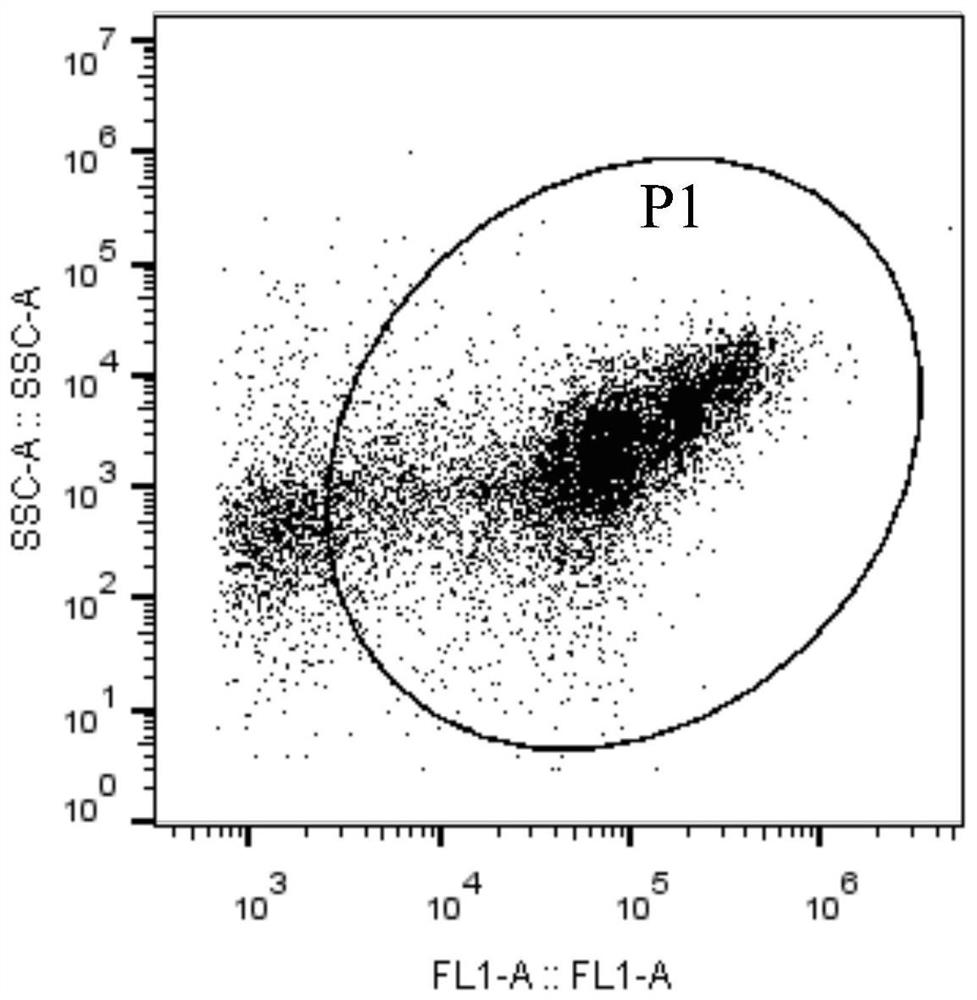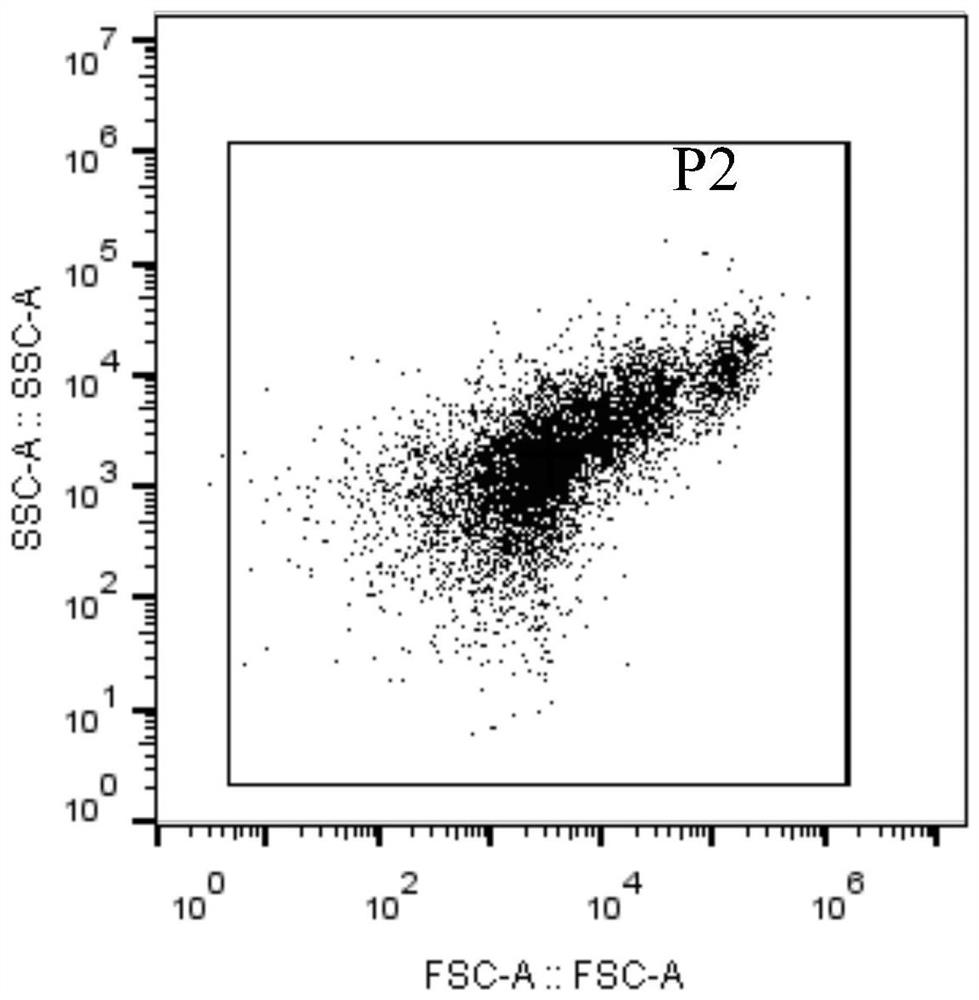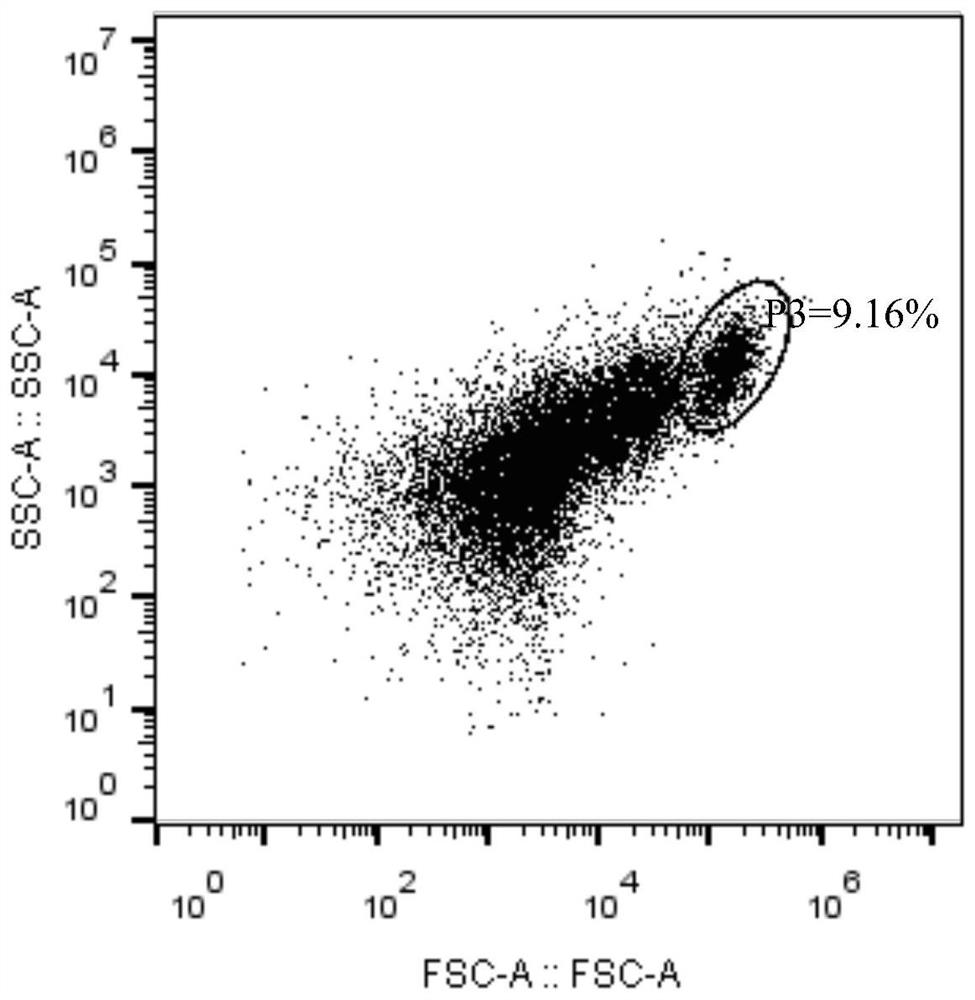A method for detecting polysaccharide bacteria in activated sludge of sewage treatment using sybr GREEN I single-staining technique
A technology for sewage treatment and activated sludge, applied in biochemical equipment and methods, measurement devices, microbe determination/inspection, etc., can solve the problems of complex experimental operation, loss of fluorescence, and no research reports, etc., and achieve simple experimental operation , reliable results, simple operation
- Summary
- Abstract
- Description
- Claims
- Application Information
AI Technical Summary
Problems solved by technology
Method used
Image
Examples
Embodiment Construction
[0029] (1) Sludge microbial immobilization
[0030] a. Take 300 μL of mud sample in a 2ml centrifuge tube, centrifuge at 10000r / min for 3 minutes,
[0031] Discard the supernatant and add 300 μL of PBS buffer;
[0032] b. Add 1.2ml of paraformaldehyde with a mass percentage concentration of 4% to the centrifuge tube and solidify at 4°C
[0033] Set 3h;
[0034] (2) Cleaning and dilution after fixation
[0035] a. Take out the centrifuge tube from 4°C and centrifuge at 14000r / min for 2min30s;
[0036] b. remove the supernatant;
[0037] c. Add 1.2ml of 1×PBS phosphate buffer solution to the tube, centrifuge to remove the supernatant; repeat this procedure
[0038] step twice;
[0039] d. Add 300 μL of 1×PBS phosphate buffer solution to the tube;
[0040] (3) Ultrasonic dispersion and ethanol dehydration
[0041] aUse an ultrasonic breaker, the ultrasonic power is 80W, stop for 5s after every 30s of ultrasonication, for a total of 4min30s;
[0042] b Divide the ultrason...
PUM
 Login to View More
Login to View More Abstract
Description
Claims
Application Information
 Login to View More
Login to View More - R&D
- Intellectual Property
- Life Sciences
- Materials
- Tech Scout
- Unparalleled Data Quality
- Higher Quality Content
- 60% Fewer Hallucinations
Browse by: Latest US Patents, China's latest patents, Technical Efficacy Thesaurus, Application Domain, Technology Topic, Popular Technical Reports.
© 2025 PatSnap. All rights reserved.Legal|Privacy policy|Modern Slavery Act Transparency Statement|Sitemap|About US| Contact US: help@patsnap.com



